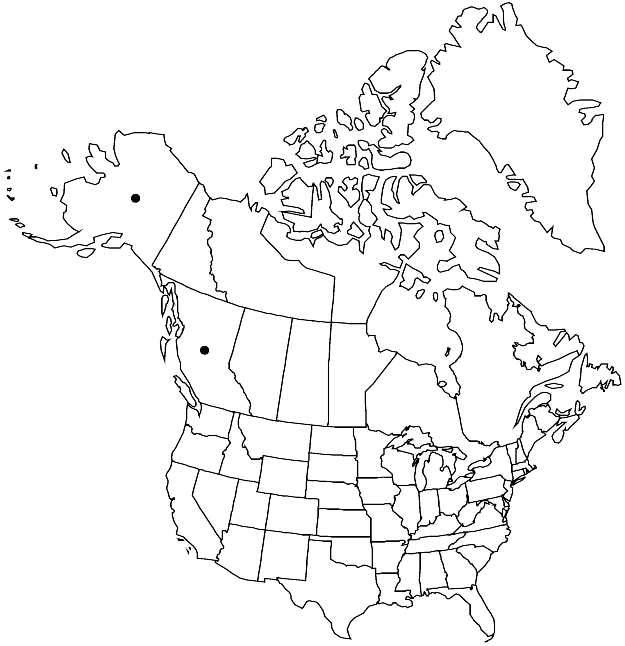Difference between revisions of "Ulota barclayi"
J. Linn. Soc., Bot. 8: 26. 1864.
FNA>Volume Importer |
FNA>Volume Importer |
Revision as of 22:00, 16 December 2019
Plants to 1(–2.5) cm. Stems erect. Stem leaves slightly crisped and curved when dry, narrowly lanceolate to oblong-lanceolate, 1.5–2.5 mm; base oblong; margins broadly reflexed or plane; apex acute; basal laminal cells hexagonal-rounded, not pigmented, walls thin; distal cells 8–12 µm, smooth or papillae essentially absent. Specialized asexual reproduction absent. Sexual condition autoicous; perichaetial leaves differentiated from stem leaves or not. Seta 1.8–3.2 mm. Capsule oblong-ovate when mature, oblong-cylindric when old and dry, 1–2 mm, strongly 8-ribbed 3/4 length, mouth wide but constricted below mouth or evenly tapering to seta from mouth; stomata in neck and proximal capsule; peristome double; exostome teeth ± split to 16, reflexed, evenly papillose; endostome segments 8, slightly papillose. Calyptra short-conic, sparsely hairy or hairs few, near apex. Spores 16–21 µm.
Habitat: Tree trunks and branches
Elevation: low elevations
Discussion
Ulota barclayi, described from Alaska, may be a species distinct from the eastern Asian U. japonica. From other West Coast species of the genus, these populations differ by leaves only slightly twisted and curved, strongly differentiated perichaetial leaves, cushion-forming erect plants, reflexed exostome, and small spores.
Selected References
None.
